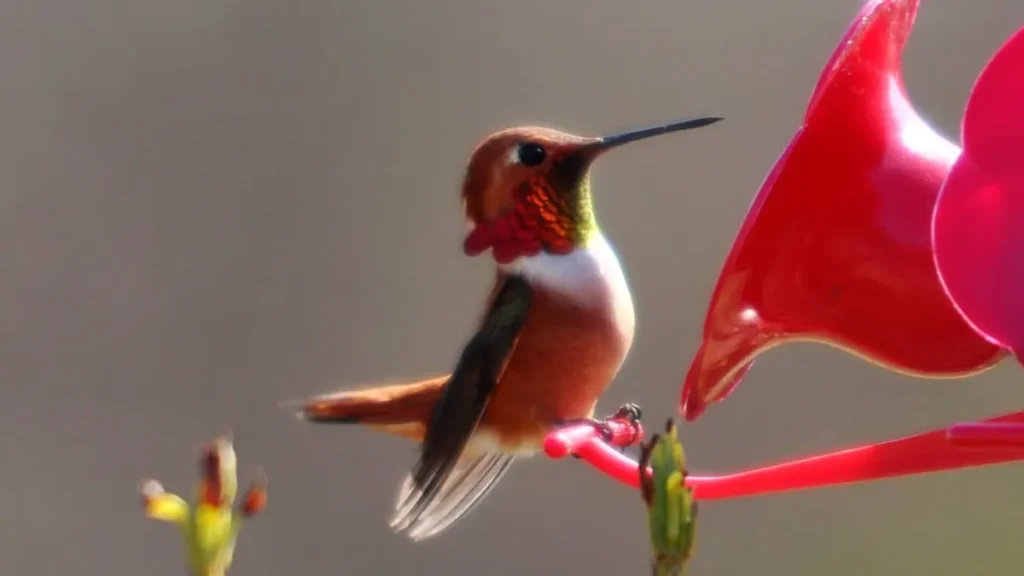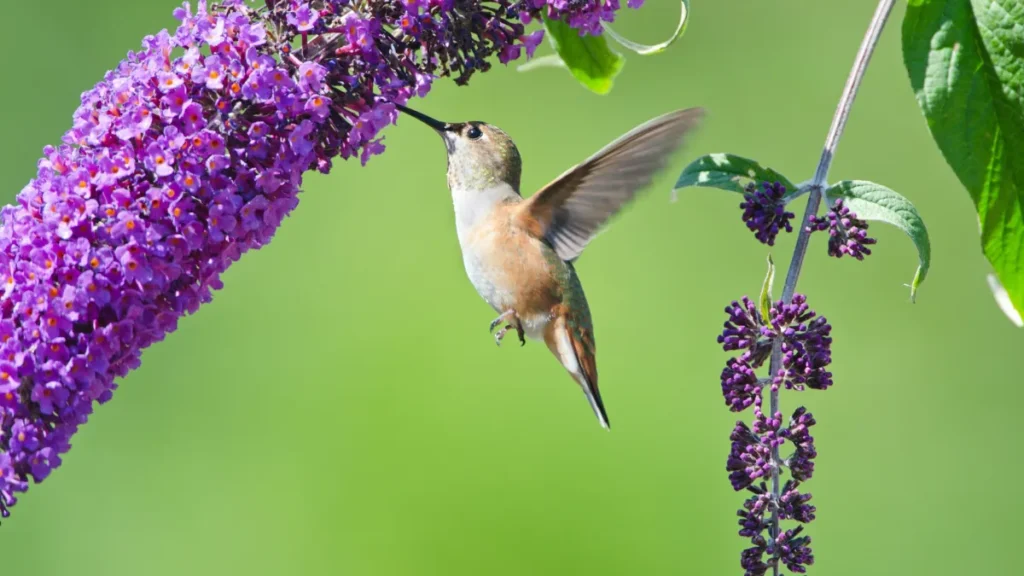Hummingbirds are one of the most captivating creatures to spot during the summer months. Known for their brilliant colors and rapid flight, these tiny birds are a favorite among nature lovers. If you’re a fan of birdwatching or just enjoy seeing beautiful wildlife, you’ll want to keep an eye out for these nine incredible hummingbird species. Each one offers something unique in terms of color, behavior, and habitat.
1. Ruby-throated Hummingbird
The Ruby-throated Hummingbird is the most common species found in the eastern United States. Males are particularly striking with their iridescent ruby-red throats, while females are more muted but still beautiful with greenish hues. These hummingbirds are often seen flitting around backyard feeders and wildflowers, especially during migration. They are the only species that regularly migrates across the Gulf of Mexico, making their long journey from the eastern U.S. to Central America.
Where to Find Them: Eastern U.S., especially in gardens, parks, and near flowering plants.
2. Black-chinned Hummingbird
The Black-chinned Hummingbird is a medium-sized species found in the southwestern U.S. and Mexico. Males have a striking black chin and a violet-blue throat that shines in the sunlight. Females lack the iridescent throat but still have an impressive presence with their greenish back and white underparts.
Where to Find Them: Arizona, New Mexico, and Mexico, particularly near feeders and desert flowers.
3. Anna’s Hummingbird
Anna’s Hummingbird is one of the most dazzling species, especially the males, who feature an iridescent rose-pink head and throat. This bird is one of the few species that are year-round residents in parts of the southwestern U.S., so it’s a great species to spot during the summer months. Their beauty makes them a popular bird for birdwatchers, often seen around flowering plants and feeders.
Where to Find Them: Arizona, California, and other southwestern states.
4. Rufous Hummingbird
The Rufous Hummingbird is a small, fiery bird that’s known for its bright orange-red feathers, particularly on the back and throat of males. These birds are aggressive and territorial, often seen defending their favorite feeding spots. Their range extends from the western U.S. to Canada, where they are a common sight in gardens and woodlands.
Where to Find Them: Western U.S., especially along the West Coast and in mountainous areas.
5. Calliope Hummingbird
The Calliope Hummingbird is the smallest bird in North America and one of the tiniest species of hummingbird in the world. Males are known for their vibrant, iridescent purple throat, which contrasts with their greenish body. Despite their size, these little birds are known for their loud, chirpy songs. They are migratory and travel through the western U.S. on their way to wintering grounds in Mexico.
Where to Find Them: Pacific Northwest, particularly in areas with tall flowers like lupines and penstemon.
6. Broad-tailed Hummingbird
The Broad-tailed Hummingbird is easy to identify by the broad, metallic green tail feathers of the males. These birds are common in the southwestern U.S. and northern Mexico, particularly around mountainous regions. Their long migration distances and vibrant plumage make them a fascinating species to watch during summer.
Where to Find Them: Rocky Mountains and surrounding areas, especially at higher elevations.
7. Allen’s Hummingbird
Allen’s Hummingbird is a small bird with a fiery orange-red back and a brilliant emerald green head. Males have a bright iridescent orange throat, while females have a more muted, greenish appearance. This species is often found in coastal regions, especially in California, where it enjoys the warmer summer temperatures.
Where to Find Them: Coastal California, especially in areas with abundant flowering plants.
8. Magnificent Hummingbird
As its name suggests, the Magnificent Hummingbird is a large and stunning species. Males have an iridescent green body with a vibrant purple throat. This species is known for its striking size and coloration, and it can be found in mountainous regions of the southwestern U.S. and Mexico.
Where to Find Them: Arizona, New Mexico, and northern Mexico, particularly around higher elevation areas.
9. Costa’s Hummingbird
Costa’s Hummingbird is another beautiful species with males exhibiting striking violet crowns and throats. The rest of their bodies are a mix of green and white, giving them a very distinctive appearance. They are native to the southwestern U.S. and Mexico and are frequently seen in desert habitats.
Where to Find Them: Arizona, California, and other desert areas in the southwestern U.S.
4 Short FAQs About Hummingbirds:
1. What’s the best way to attract hummingbirds to my garden?
To attract hummingbirds, plant nectar-rich flowers such as trumpet vine, bee balm, and columbine. You can also set up a hummingbird feeder with a mixture of four parts water to one part sugar, making sure to clean the feeder regularly.
2. Do hummingbirds migrate?
Yes, many hummingbird species, including the Ruby-throated Hummingbird, migrate long distances during the colder months. They often travel between the U.S. and Central America.
3. How long do hummingbirds live?
On average, hummingbirds live for about 3 to 5 years, though many do not survive their first year due to predators, weather, or other factors. However, some individuals can live much longer.
4. Why do hummingbirds hover?
Hummingbirds hover to feed on nectar from flowers or feeders. Their ability to hover is due to their unique wing structure, which allows them to beat their wings in a figure-eight pattern.
Conclusion:
Hummingbirds are not just beautiful creatures to watch but are also vital pollinators for many plants. Whether you’re an experienced birdwatcher or just starting, keeping an eye out for these fascinating species this summer will be rewarding. From the fiery Rufous Hummingbird to the tiny Calliope Hummingbird, each species brings its own charm and beauty to the natural world.


